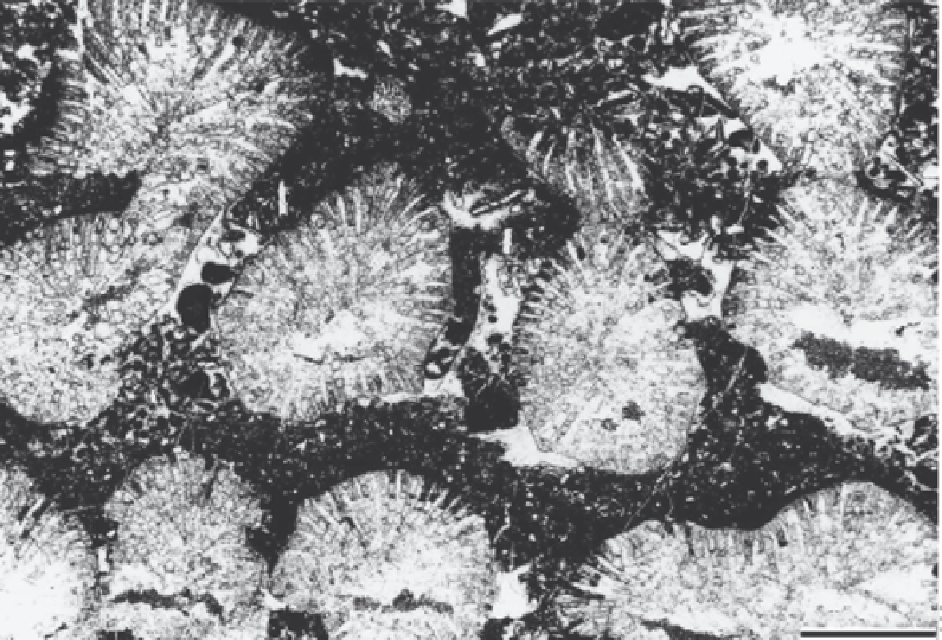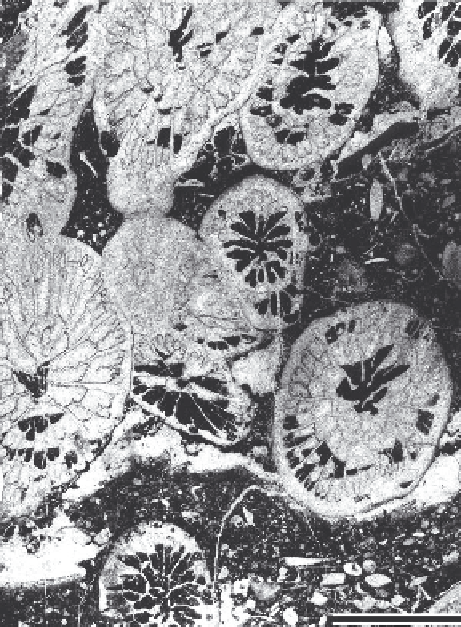Geology Reference
In-Depth Information
Fig. 11.1.
Coral limestone with
Retiophyllia clathrata
(Emmrich). Coral thicket formed on the upper part of a carbonate
ramp. Late Triassic (Rhaetian): Plattenkogel, Steinplatte near Waidring, Tyrol. Scale is 1 cm.
stones from the Austrian Calcareous Alps (Stanton and
Flügel 1989). Both figures show cross sections of co-
lonial scleractinian corals exhibiting the same fascicu-
late growth form. The samples differ in taxonomy and
in the composition of the fine-grained matrix between
the coral stems. The corals in sample A belong to
Retio-
phyllia clathrata
(Emmrich), the corals in sample B to
Stylophyllum polycanthum
(Reuss). The first species is
one of the most abundant Norian and Rhaetian corals,
forming coral thickets and contributing to the forma-
tion of patch reefs in high- and low-energy settings.
The latter coral is relatively rare and occurs in small
isolated patches in low-energy environments.
Retio-
phyllia clathrata
is a high-growing form,
Stylophyllum
polycanthum
a low-growing form. Systematic assign-
ment and different growth forms attribute sample A and
sample B to separate biofacies types. Their separation
into different MFTs is indicated by their distinct differ-
ences in matrix. The sediment in sample A consists of
microbial micrite, partly forming irregular crusts on and
Fig. 11.2.
Coral limestone with
Stylophyllum polycanthum
(Reuss). Coral patch formed on the deeper and distal part of
a carbonate slope. Late Triassic (Rhaetian): Cliff section,
Steinplatte near Waidring, Tyrol. Scale is 1 cm.


